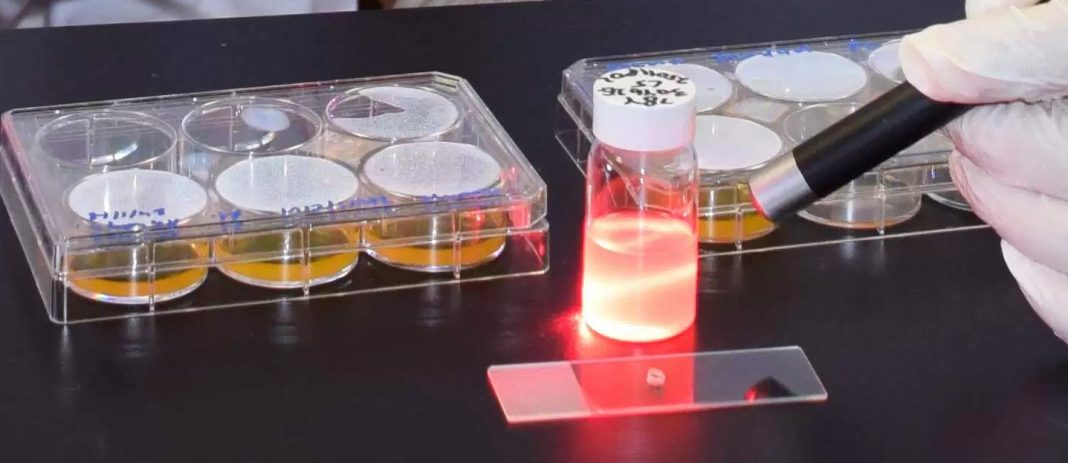Researchers at the National University of Singapore (NUS) say they have developed a method to wirelessly deliver light into deep regions of the body to activate light-sensitive drugs for photodynamic therapy (PDT). They believe this technology could potentially enable PDT to be used to treat a wider range of cancers, such as brain and liver cancer.
The study (“In Vivo Wireless Photonic Photodynamic Therapy”) is published in Proceedings of the National Academy of Sciences (PNAS).
“Effective clinical application of PDT and other light-based therapies…is hindered by challenges in light delivery across biological tissue, which is optically opaque. To target deep regions, current clinical PDT uses optical fibers, but their incompatibility with chronic implantation allows only a single dose of light to be delivered per surgery. Here we report a wireless photonic approach to PDT using a miniaturized (30 mg, 15 mm3) implantable device and wireless powering system for light delivery,” write the investigators.
“We demonstrate the therapeutic efficacy of this approach by activating photosensitizers (chlorin e6) through thick (>3 cm) tissues inaccessible by direct illumination, and by delivering multiple controlled doses of light to suppress tumor growth in vivo in animal cancer models. This versatility in light delivery overcomes key clinical limitations in PDT and may afford further opportunities for light-based therapies.”
“Our approach of light delivery will provide significant advantages for treating cancers with PDT in previously inaccessible regions,” said John Ho, Ph.D., from the department of electrical and computer engineering. “Powered wirelessly, the tiny implantable device delivers doses of light over long time scales in a programmable and repeatable manner. This could potentially enable the therapies to be tailored by the clinician during the course of treatment.”
“This novel approach enables ongoing treatment to prevent reoccurrence of a cancer, without additional surgery. The application of the technology can also be extended to many other light-based therapies, such as photothermal therapy, that face the common problem of limited penetration depth. We hope to bring these capabilities from bench to beside to provide new opportunities to shine light on human diseases,” added Zhang Yong, Ph.D., from the department of biomedical engineering.
The team is now working on developing nanosystems for targeted delivery of photosensitizers. They are also developing minimally invasive techniques for implanting the wireless devices at the target site and looking into integrating sensors to the device to monitor the treatment response in real time.


